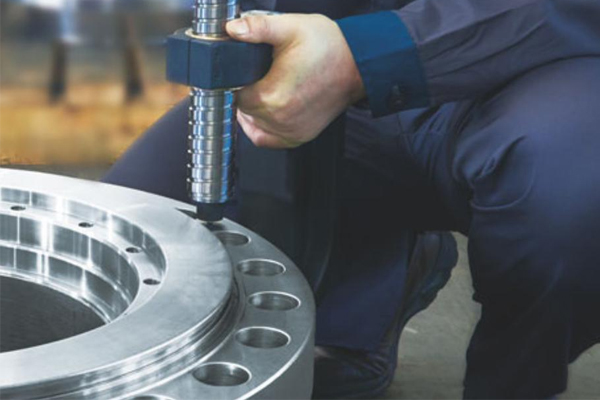In order to ensure the quality of forgings to meet the requirements of design and use of the indicators, it is necessary to forgings (blank, semi-finished products and finished products) quality inspection.
The content of forgings quality inspection includes: chemical composition inspection, appearance and size inspection, macroscopic organization inspection, microscopic organization inspection, mechanical properties inspection, residual stress inspection and ultrasonic flaw detection.
1. Chemical composition inspection general forgings do not carry out chemical composition inspection, chemical composition is based on smelting furnace sampling analysis. But for important or suspicious forgings, some chips can be cut from the forgings and chemical analysis or spectral analysis is used to test the chemical composition.
2. Appearance size inspection using visual inspection, template or marking method, check forgings surface defects, shape error and size, to determine whether the forgings can be machined.
3. macro organization inspection is also known as low times inspection, is to use the naked eye or not more than 10 times the magnifying glass, check the forging surface or section of the macro organization. The main methods are: sulfur printing, hot acid leaching, cold acid leaching and fracture.
4. Microstructure examination, namely metallographic examination, is to observe, identify and analyze the microstructure state and distribution of forgings under the light microscope, so as to help understand the relationship between microstructure and forgings performance.
5. Mechanical properties check the general mechanical properties of forgings, including checking hardness, determining strength indicators and plasticity indicators, toughness indicators, etc. For some important forgings, in order to understand the performance under persistent load and the capacity of reciprocating load, endurance, creep and fatigue tests should also be carried out.
6. Residual stress check In the forging production process, due to uneven deformation, uneven temperature, uneven phase change will cause internal stress, and finally remaining in the forging internal stress is residual stress. When there is too much residual stress inside the forging, the workpiece will be deformed due to the loss of balance of residual stress during machining, which will affect assembly. And in the process of use, because of residual stress and working stress superposition will cause zero failure, so that the whole machine is damaged. Therefore, the technical conditions of some important forgings, such as generator guard rings, stipulate that the residual stress should not exceed 20% of the yield strength.
In the above quality inspection items, such as forgings appearance, low power, flaw detection inspection items unqualified will be scrapped. If the mechanical properties check items are unqualified, they can be redone. If they are still unqualified, they need to be repaired and reheat treated. For general forgings, only select one or several forgings from a batch or the same furnace for inspection. And for important forgings, such as power plant equipment forgings, large crankshafts, high pressure vessels, etc., each should be inspected. As for forgings inspection of those items, should be based on technical conditions.
Post time: Sep-26-2021

